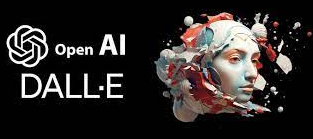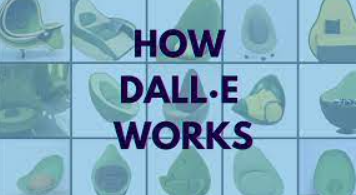In recent years, artificial intelligence (AI) has made remarkable strides in various domains, one of which is image generation. Among the many innovative models developed, DALL-E stands out as a pioneering example of AI-powered image generation. Created by OpenAI, DALL-E utilizes cutting-edge techniques in deep learning and natural language processing (NLP) to generate images from textual descriptions. In this article, we delve into the workings of DALL-E, its capabilities, applications, and the implications of this groundbreaking technology.

What is DALL-E?
DALL-E, a portmanteau of “DALI” (a surrealist artist) and “Wall-E” (a fictional robot), represents a significant advancement in the field of generative AI. Unlike traditional image generation methods that rely on predefined templates or datasets, DALL-E generates images from textual descriptions provided by users. This innovative approach enables users to describe their desired images in natural language, allowing DALL-E to interpret and generate corresponding visual representations.
How Does DALL-E Work?
At the heart of DALL-E lies a sophisticated neural network architecture capable of understanding and synthesizing complex visual concepts. The model consists of multiple layers of artificial neurons, organized in a hierarchical fashion, which process textual inputs and transform them into pixel-level representations. Through a process known as “conditional image generation,” DALL-E learns to associate textual descriptions with corresponding visual features, enabling it to generate realistic images that align with user input.

Capabilities of DALL-E
One of the most remarkable aspects of DALL-E is its ability to generate diverse and contextually relevant images based on textual prompts. Whether it’s mundane objects, fantastical creatures, or surreal landscapes, DALL-E can translate textual descriptions into visually compelling images with remarkable accuracy. Moreover, DALL-E exhibits a high degree of creativity, often producing unexpected and imaginative interpretations of user input, showcasing the depth of its generative capabilities.
Applications of DALL-E
The versatility of DALL-E opens up a wide range of applications across various industries and domains. In the field of design and creativity, DALL-E can assist artists, designers, and content creators in visualizing their ideas by generating concept art, illustrations, and graphic designs based on textual descriptions. Additionally, DALL-E has potential applications in e-commerce, where it can generate product images based on textual product descriptions, enhancing the shopping experience for consumers.
Implications and Considerations
While DALL-E holds immense promise, its deployment also raises important ethical and societal considerations. As with any AI technology, there are concerns regarding data privacy, bias, and misuse. Furthermore, the potential impact of AI-generated content on creative industries and employment warrants careful examination. As DALL-E and similar models continue to advance, it is essential to address these challenges proactively and ensure responsible development and deployment.
Conclusion
DALL-E represents a significant milestone in the field of AI-powered image generation, showcasing the potential of deep learning and natural language processing to revolutionize creative expression and visual communication. With its ability to generate diverse and contextually relevant images based on textual input, DALL-E opens up new possibilities across industries ranging from design and entertainment to e-commerce and beyond. However, as we embrace this transformative technology, it is crucial to approach its development and deployment with mindfulness and responsibility, ensuring that it serves the collective good while mitigating potential risks and challenges.
FAQs
What is DALL-E?
DALL-E is an AI model developed by OpenAI that generates images from text descriptions, merging surrealism with technology.
How accurate are DALL-E’s images?
While DALL-E can produce high-quality images, accuracy may vary based on complexity, with occasional deviations.
Can DALL-E generate copyrighted images?
DALL-E generates images based on text prompts and does not access copyrighted material unless part of training data.
Is DALL-E publicly available?
As of now, DALL-E isn’t publicly accessible, but periodic updates from OpenAI provide insights into its capabilities.
